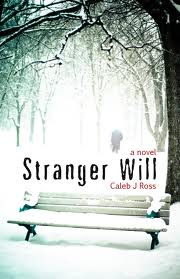I obsess over my sentences (in stories, not blog posts). This makes me an exceptionally-slow writer, as I don’t move on from a paragraph until it’s as polished as can be at that time. One finished page is a really solid evening for me. I prefer this meticulous method to the one most authors employ, which is to spit out a draft as quickly as possible and then spend the bulk of their time on numerous rewrites or revisions. As someone who derives more enjoyment from crafting prose than charting plot points, that’s just too much delayed gratification (I do outline in advance). My way keeps me interested because each time I close the laptop lid I feel a sense of accomplishment, that a section is “done” to the best of my ability, not put off for some future date.
I am, however, jealous of those who can draft very quickly, those whose storyteller brains work faster than their fingers can, and I would gladly attempt that method were I so endowed. Most writers excel at excuse-generation and rationalization by their nature, and with that in mind, I think I’ve recently discovered one reason for my sloth: writing at a computer.
To break out of the habits that result in stale prose, I’m always trying new experiments, be they environmental or biological or timely. One of these is to write longhand, which I do about 25% of the time in little Moleskine. I’ve noticed that I generate more words in less time this way, even though they tend to be rougher. Several months ago, in an effort to lose some el-bees, I started stationary-biking daily. Usually this requires me to crank an iPod at high BPMs and SPLs to maintain the tempo and endurance I need. A couple weeks ago I traded the iPod for my cell phone’s voice recorder, attempting to dictate a scene from my in-progress novel into it.
My expectations were low, even though I understand that a physical activity or some routine task can be an excellent creative kickstarter for writers, something to keep the lower-level brain functions distracted so that the good stuff can sneak out undetected. This has rarely worked for me before, as I’m hyper-focused and thus a lousy multitasker, no matter how menial the chore. Plus, my brain is always spinning with music even in complete silence, looping movie dialogue, or anything else our modern overstimulated senses consume. To my surprise, though, after about ten minutes, the singing voices faded and the scene began coming together a line at a time — winded though it was — a few hundred words over the course of 40 minutes and 11-some miles, with no drop-off in pace like I experience whenever trying to read instead of headbang.
Of course, biking is probably better for brainstorming or outlining than actual prose, because the phrases I come up with are quite rough. It usually takes me a couple of evenings to polish and expand upon what I transcribed after those 40 minutes. Also, I doubt it would be very effective when working with a blank slate, so I need to first know what the scene’s and characters’ objectives are before I begin.
Anyway, the point of this post is that I think I figured out why dictation and longhand allow me to create more in less time. It’s because of the visual factor. On the computer, below and/or above the blinking cursor, I’ve usually got at least 10 other perfectly-legible typed lines of sharp text at about the equivalent of 24-point type (12 pt at 200% zoom) competing for my attention. The urge to revise these is constant, especially when waiting for inspiration to strike on the current sentence. With dictation, your mind is only in the moment. There are no visual/textual distractions at all, and I’m not rewinding the recorder between lines. And with longhand, my cursive is just illegible enough to serve as the equivalent of a blur filter, keeping my attention on the current line and not any premature nostalgia for those that came before.
So give it a try next time you’re in a rut. Change your location, or your schedule, or your diet … or in this case, your medium. Step out of your comfort zone and forget about everything else you wrote before this sentence.











